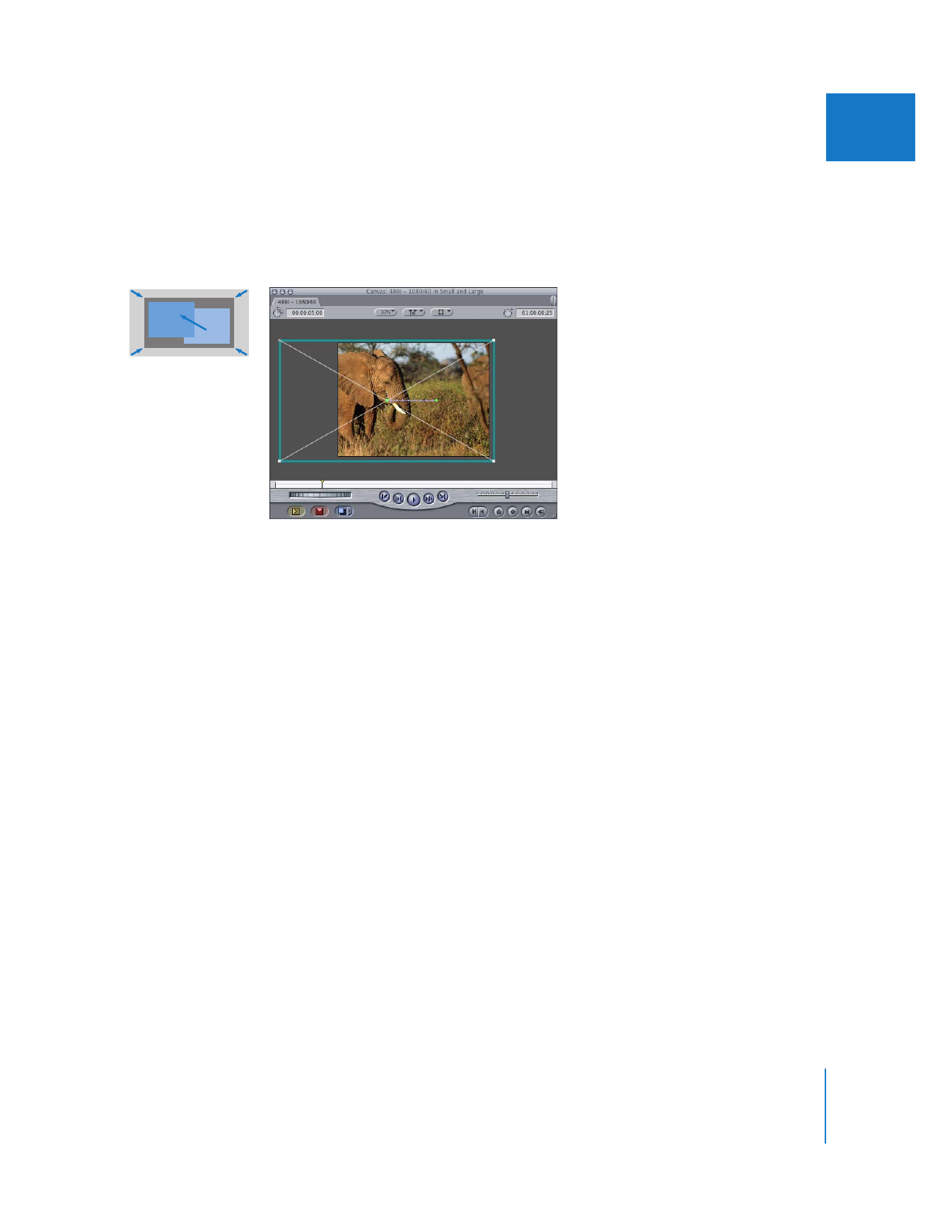
Pan and Scan
The pan and scan method crops 16:9 clips within a 4:3 frame, but each clip can be
uniquely cropped to focus on a particular portion of the frame. The pan and scan
method does not necessarily refer to panning during the transfer, but rather the fact
that each frame may be cropped differently.
To crop and move a 16:9 clip within a 4:3 sequence:
1
Follow the instructions for scaling a 16:9 clip within a 4:3 sequence in “
Cropping 16:9
Video to 4:3
” on page 692.
The sides of the clip are now cropped by the 4:3 sequence. Now you can move the clip
horizontally to focus on different parts of the frame. If you scaled the clip beyond the
height of the Canvas, you can also move the clip vertically.
2
In the Canvas, choose Image+Wireframe from the View pop-up menu.
Wireframe guides appear over the sequence clip.
3
Choose Fit to All from the Zoom pop-up menu so you can see the boundaries of the clip.
4
Make sure the Selection tool is active by clicking it in the Tool palette (or pressing A).
5
While holding down the Shift key, drag the clip in the Canvas to the left or right to
select a new framing for the clip.
Holding down the Shift key restricts movement to a single axis so you can limit your
adjustments to the horizontal axis.
16:9 to 4:3 pan and scan

694
Part IV
Real Time and Rendering
16:9 Anamorphic
You can use this method to preserve the 16:9 aspect ratio of HD video when scaling
down to SD video. 16:9 anamorphic video squeezes a 16:9 image within a 4:3 aspect
ratio, and the image is stretched during playback so it appears normally. Some DVD
players and video monitors have an option to unsqueeze anamorphic video.
To squeeze a 16:9 clip within a 16:9 anamorphic sequence:
1
Create a sequence with a 16:9 anamorphic aspect ratio. For example, choose the DV-NTSC
Anamorphic or DV-PAL Anamorphic Easy Setup and then create a new sequence.
2
Drag a clip with a 16:9 aspect ratio to the sequence.
If a dialog appears asking if you want to conform your sequence settings to your clip,
click No.
The 16:9 sequence clip is now scaled to fit in the anamorphic 16:9 sequence, and the
aspect ratio of the 16:9 clip is preserved even though you are working in an SD sequence.
For more information about anamorphic video, see Volume IV, Appendix D, “Working
with Anamorphic 16:9 Media.”